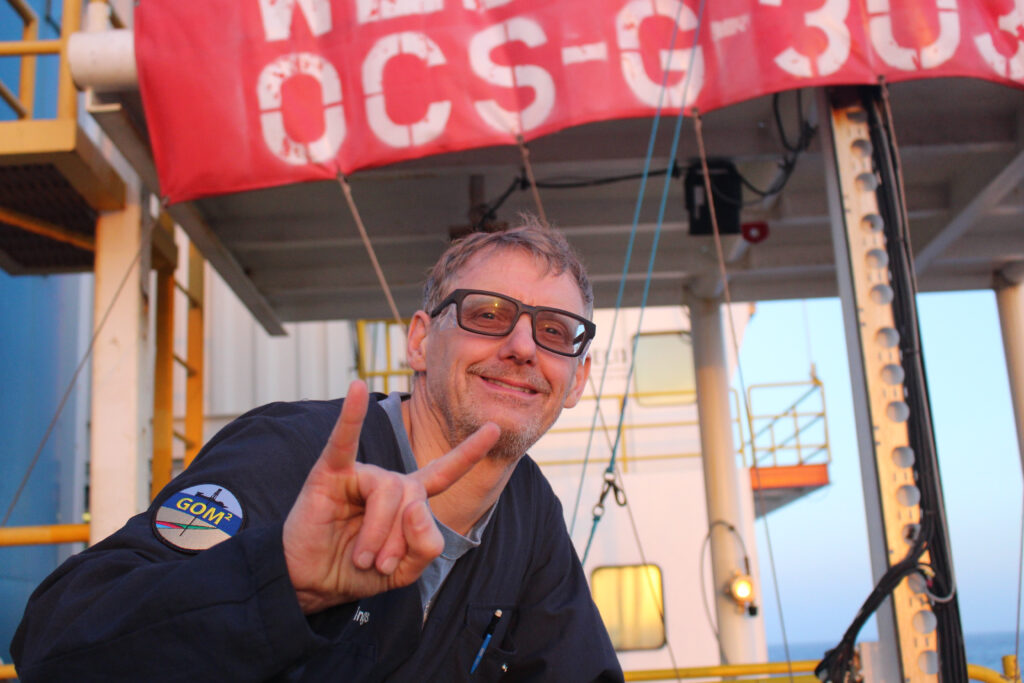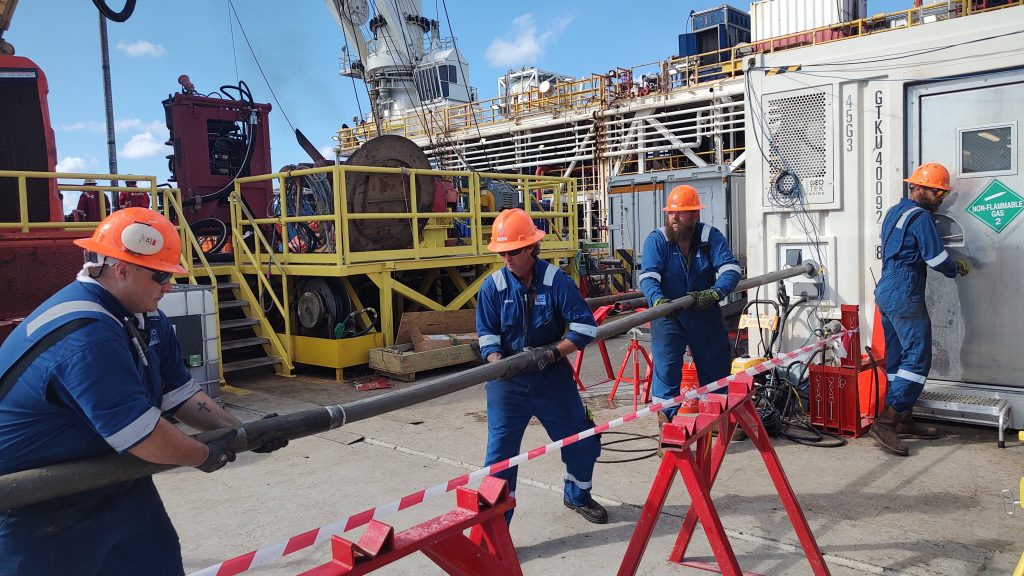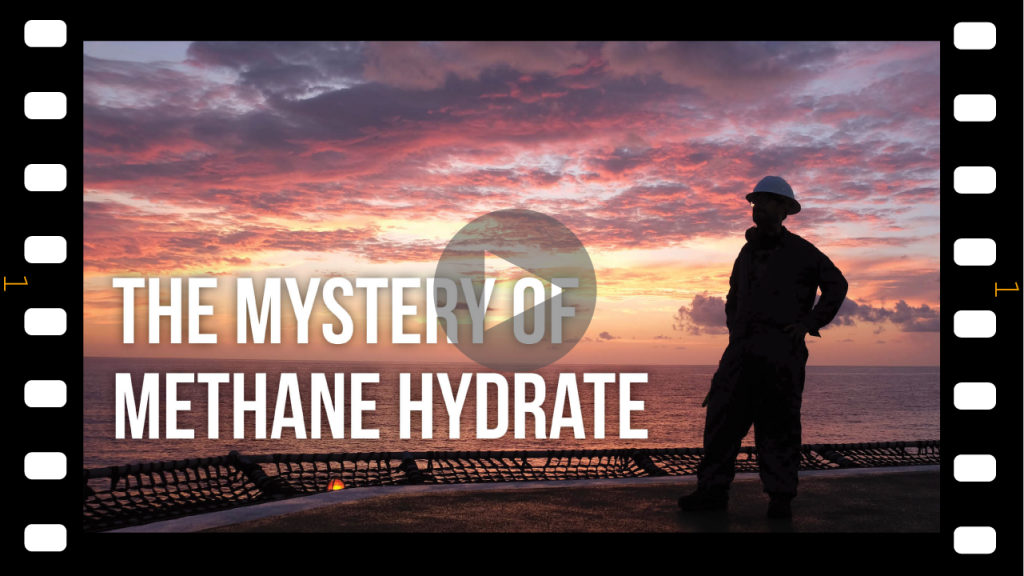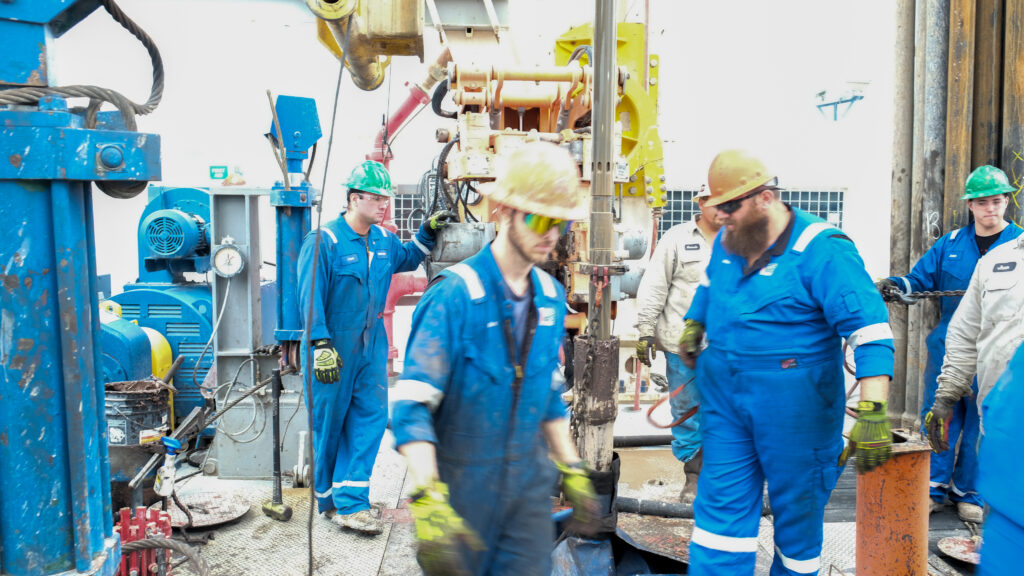
The University of Texas at Austin has returned to the Gulf of Mexico to lead a Department of Energy-funded mission to sample and study methane hydrate, an ice-like solid composed of water and methane that forms at high pressure and low temperature. This difficult to reach and poorly understood substance has potentially wide-ranging effects on the planet’s environment, climate and energy resources.
Led by Peter Flemings, a professor at the UT Jackson School of Geosciences, the ongoing mission builds on a 2017 expedition that was the first to extract pressurized core samples of methane hydrate from sand-rich reservoirs over 1,000 feet beneath the seafloor in the Gulf of Mexico. It was an engineering feat that trapped the hydrate inside the cores at the same immense pressures that they are held under the seafloor. This allowed the scientists to pull the cores to the surface intact for further study in a specialized methane hydrate laboratory at the Jackson School and at other laboratories around the globe.
Now, six years later, Flemings and a team of scientific collaborators are currently at sea, working aboard a deepwater drilling platform, to study the entire methane hydrate reservoir system by extracting cores –both pressurized and unpressurized – and beginning their study as soon as they reach the surface.
The scientists include microbiologists, geochemists, petrophysicists and more from a dozen collaborating institutions, including U.S. Geological Survey, Ohio State University, the University of Washington, Oregon State University, the University of New Hampshire, the Colorado School of Mines and Tufts University.

Methane hydrate reservoirs form when methane produced by buried microbes collects together at low temperatures and great pressures. Understanding the specifics of the surrounding reservoir system is important because it influences whether methane hydrate stays solid or disassociates into gas, as well as how easily any free gas can leave the reservoir systems for other places – including other parts of the seafloor, the ocean and even the atmosphere. It also influences how methane hydrate could one day be produced for energy.
What’s more, methane hydrate reservoirs are among the largest caches of carbon on the planet. Scientists estimate that they may hold as much as 22 percent of the world’s organic carbon, about double the amount of carbon currently in the atmosphere. The fact that methane is a greenhouse gas that is 84 times more potent than carbon dioxide (CO2) over a 20-year timeframe, makes understanding how methane hydrate reservoirs are interacting with the larger ocean and atmospheric environment an important environmental and climate question.
“Methane hydrates are a key part of the carbon cycle and can impact climate and society in different ways,” said Flemings. “We’re focused on understanding where the methane moves in the system, how much is trapped and buried and how much is admitted into the oceans.”
According to Jackson School Dean Claudia Mora, the mission illustrates the importance of carrying out basic science required to refine research with potentially big societal impacts.
“Science starts with data gathering, but it doesn’t end there,” she said. “The insights that come from this mission can help lay the foundation for understanding methane hydrate reservoirs around the world, and just how this massive source of carbon can affect the planet now and in the future.”
Follow @utgeophysics for mission updates.
The Mystery of Methane Hydrate – a documentary
Monica Kortsha’s Expedition Blog
Methane Hydrate: The Mission Continues
Pressure Coring Technology One Step Closer to Hydrates Test



